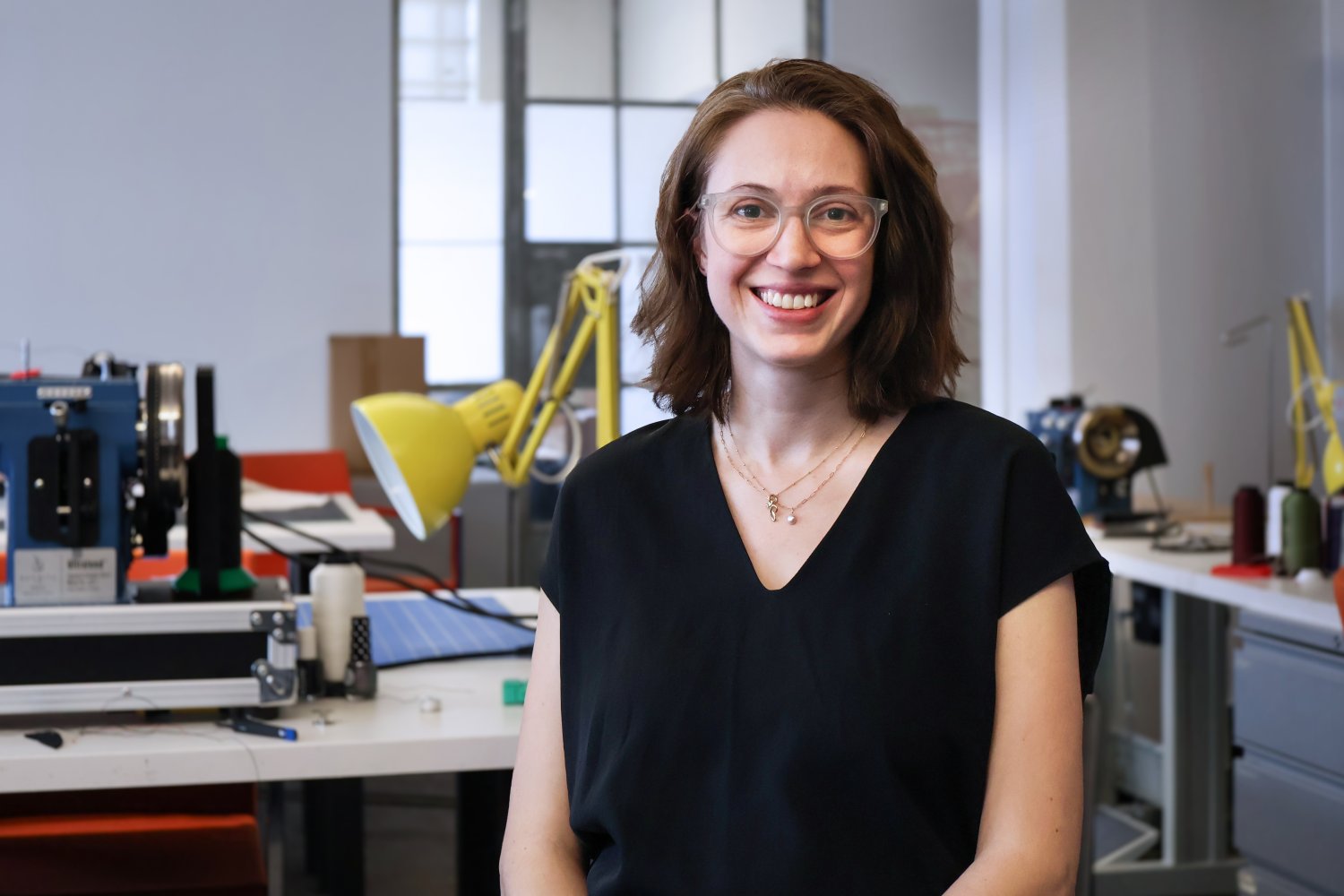Introduction to Caitlin Morris
Caitlin Morris is an architect, artist, researcher, and educator who has studied psychology and used online learning tools to teach herself coding and other skills. She’s a soft-spoken observer, with a keen interest in how people use space and respond to their environments. Combining her observational skills with active community engagement, she works at the intersection of technology, education, and human connection to improve digital learning platforms.
Early Life and Education
Morris grew up in rural upstate New York in a family of makers. She learned to sew, cook, and build things with wood at a young age. One of her earlier memories is of a small handsaw she made — with the help of her father, a professional carpenter. It had wooden handles on both sides to make sawing easier for her. Later, when she needed to learn something, she’d turn to project-based communities, rather than books. She taught herself to code late at night, taking advantage of community-oriented platforms where people answer questions and post sketches, allowing her to see the code behind the objects people made.
Self-Learning and Community Engagement
“For me, that was this huge, wake-up moment of feeling like there was a path to expression that was not a traditional computer-science classroom,” she says. “I think that’s partly why I feel so passionate about what I’m doing now. That was the big transformation: having that community available in this really personal, project-based way.” Subsequently, Morris has become involved in community-based learning in diverse ways: She’s a co-organizer of the MIT Media Lab’s Festival of Learning; she leads creative coding community meetups; and she’s been active in the open-source software community development.
Research and Work
“My years of organizing learning and making communities — both in person and online — have shown me firsthand how powerful social interaction can be for motivation and curiosity,” Morris said. “My research is really about identifying which elements of that social magic are most essential, so we can design digital environments that better support those dynamics.” Even in her artwork, Morris sometimes works with a collective. She’s contributed to the creation of about 10 large art installations that combine movement, sound, imagery, lighting, and other technologies to immerse the visitor in an experience evoking some aspect of nature, such as flowing water, birds in flight, or crowd kinetics.
Artistic Contributions
MIT graduate student and MAD Fellow Caitlin Morris contributed concept design, design development, electrical design and engineering, firmware development, and fabrication to “Diffusion Choir,” an installation from the artist collaborative Hypersonic, as well as Sosolimited and Plebian Design. She did much of this work with New York-based Hypersonic, a company of artists and technologists specializing in large kinetic installations in public spaces.
Teaching and Mentorship
She earned a BS in psychology and a BS in architectural building sciences from Rensselaer Polytechnic Institute, then an MFA in design and technology from the Parsons School of Design at The New School. During, in between, after, and sometimes concurrently, she taught design, coding, and other technologies at the high school, undergraduate, and graduate-student levels. “I think what kind of got me hooked on teaching was that the way I learned as a child was not the same as in the classroom,” Morris explains. “And I later saw this in many of my students. I got the feeling that the normal way of learning things was not working for them. And they thought it was their fault. They just didn’t really feel welcome within the traditional education model.”
Doctoral Research
For her doctoral work with the MIT Media Lab’s Fluid Interfaces Group, she’s focusing on the personal space and emotional gaps associated with learning, particularly online and AI-assisted learning. This research builds on her experience increasing human connection in both physical and virtual learning environments. “I’m developing a framework that combines AI-driven behavioral analysis with human expert assessment to study social learning dynamics,” she says. “My research investigates how social interaction patterns influence curiosity development and intrinsic motivation in learning, with particular focus on understanding how these dynamics differ between real peers and AI-supported environments.”
Conclusion
Caitlin Morris is a pioneer in the field of digital learning, using her unique blend of skills and experiences to improve the way we learn and interact with technology. Her work has the potential to revolutionize the way we approach education, making it more accessible, engaging, and effective for all. With her passion for community-based learning and her commitment to creating a more inclusive and supportive learning environment, Morris is an inspiration to anyone interested in the future of education.
FAQs
Q: What is Caitlin Morris’s background?
A: Caitlin Morris is an architect, artist, researcher, and educator who has studied psychology and used online learning tools to teach herself coding and other skills.
Q: What is Morris’s research focus?
A: Morris’s research focuses on the personal space and emotional gaps associated with learning, particularly online and AI-assisted learning.
Q: What is the goal of Morris’s doctoral research?
A: The goal of Morris’s doctoral research is to develop a framework that combines AI-driven behavioral analysis with human expert assessment to study social learning dynamics.
Q: What is the potential impact of Morris’s work?
A: Morris’s work has the potential to revolutionize the way we approach education, making it more accessible, engaging, and effective for all.
Q: What is the MIT MAD Fellowship?
A: The MIT MAD Fellowship is a program that supports innovative and interdisciplinary research in the field of design and education.











